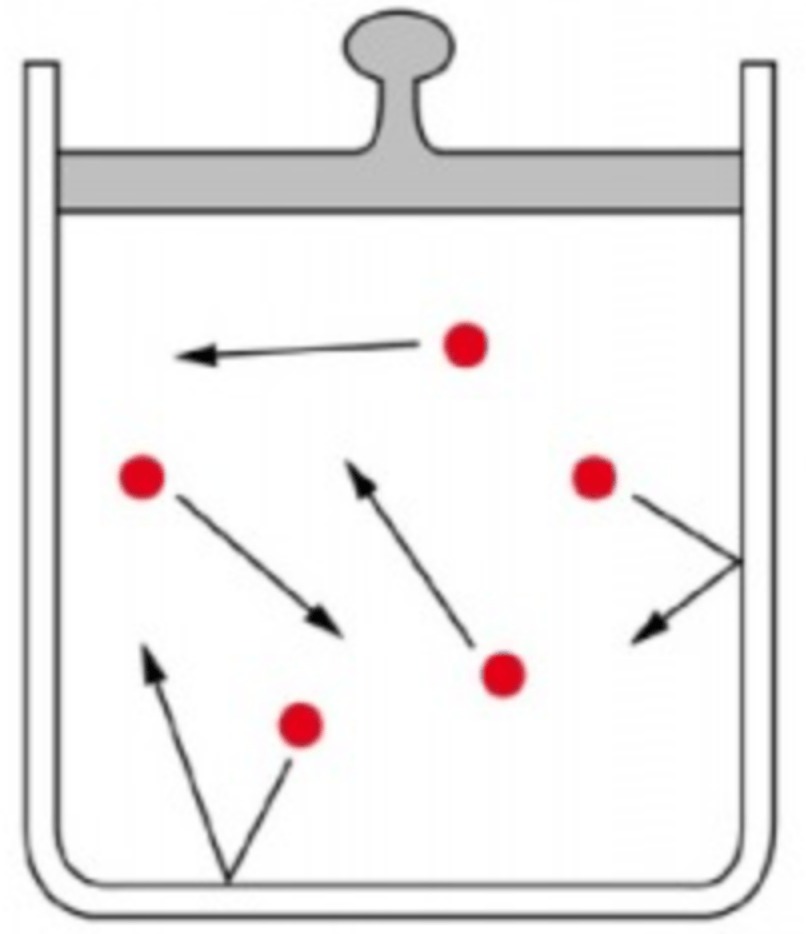What variable and what unit do we use for volume?
V (L) or (mL)
If the temperature is written in oC you need to _____ 273 to convert to K.
add
P and V stand for?
Pressure and Volume
What temperature in K is considered "standard?"
273K
Pressure and volume are a(n) ________ relationship.
inverse
What variable and what unit do we use for pressure?
P (atm)
0oC is _____ K
273 K
Before plugging in our temperatures we need to make sure that the temperature is converted to ______.
Kelvin (K)
What does STP stand for?
standard temperature and pressure
If you push the plunger down, the volume of the gas decreases and the pressure ________.

increases
What variable and unit do we use for temperature?
What temperature scale do we need to use before plugging our numbers into the gas law equations?
Kelvin (K)
What variable do we use for number of moles of a gas?
22.4
slow down
Pressure and temperature display a(n) ________ relationship.
100oC is ______K
373 K
What does R stand for?
Gas Constant
What pressure in atm is considered "standard?"
1 atm
Keeping a concentrated gas temperature at high temperature will increase the pressure within the tank and is dangerous because the tank could ______.
What is the equation for the combined gas law?
((P1*V1)/(T1))=((P2*V2)/(T2))
How many degrees do you need to add to your temperature given in Celsius to convert to Kelvin?
273
What is the equation for the ideal gas law?
PV = nRT
How do we get out of grams and into moles?
We use the molar mass
Volume and temperature are a(n) ______ relationship.
direct